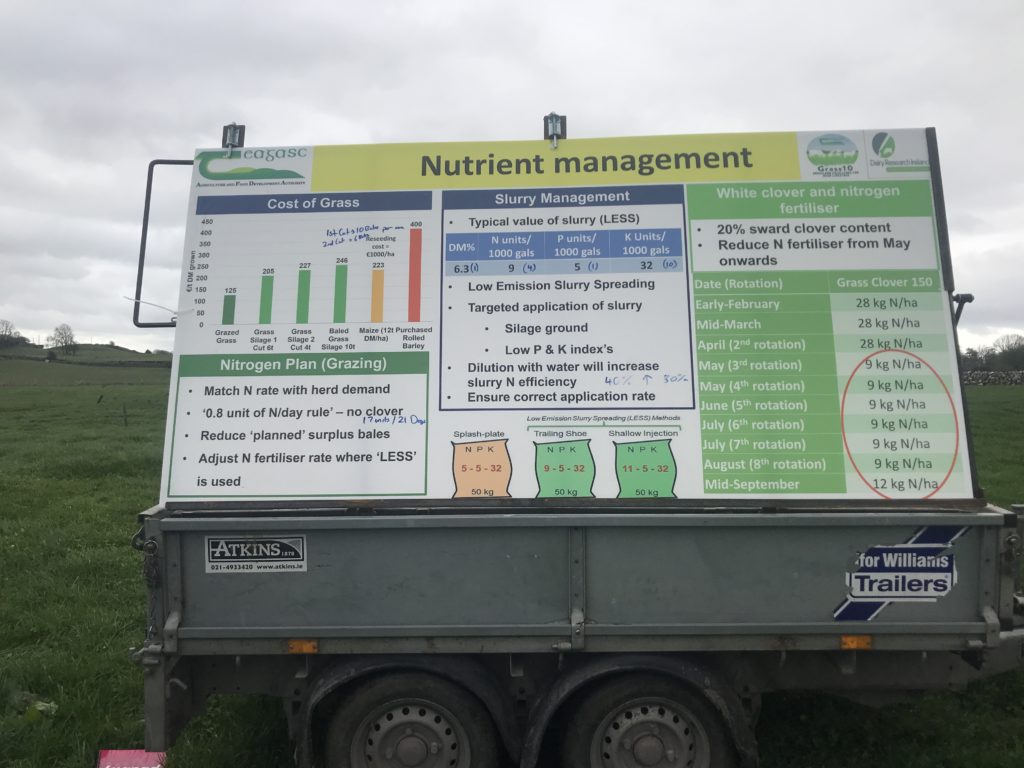The Teagasc clover walks got underway today (Tuesday, April 5) and Kevin Moran who farms near Tuam in Co. Galway was one of the farms hosting a walk on the first day of these events.
The attendees heard a number of researchers and advisers from Teagasc speak about clover, fodder budgets and the value of grass.
Clover walks
At the event in Galway, Joseph Dunphy from Teagasc spoke about the value of grass in a year where input costs have increased on farms.
Joseph told the farmers in attendance that “the cost of grazed grass in a normal year is 7.5c/kg of dry matter (DM) or €75/t.
“This has increased by about 5c/kg of DM to €125/t or 12.5c/kg. Grass silage is now over 20c/kg of DM for first cut and over 22c/kg of DM for second cut – while bales are about 24c/kg of DM.”
Joseph also outlined a figure for maize silage of 22c/kg, which does not include reseeding and rolled barley of 40c/kg of DM.
Joseph outlined that the key message is still to be good at the basics and maximise grazed grass, our cheapest feed.

Nitrogen
Joseph also stated: “The majority of farmers are behind in terms of nitrogen (N) and slurry applied on farms this year.
“Number one due to cost, but also due to availability. But we still need to focus on the basics and get your N requirements out now,” he added.
“If you are unsure about the response to N earlier in the springtime. There can be no doubt about the response from N or slurry that is applied as we move through April and into May.
“We are unsure about how long these high input costs will continue for, so we must look inside the farm gate.
“It is vitally important that we follow the advice for N to date and throughout April and May in terms of managing the transition into the second rotation and growing enough grass and silage within the farm gate to sustain ourselves for next winter.”
N for summer
Speaking about N use during the summer months Joseph said: “We are going to need to put surplus silage bales in the yard.
“In the majority of dairy systems we probably need a bale/cow on dry ground to ensure we have a buffer in the shoulder of year – on some heavier soils the advice is two bales.
“But if you are consistently going out with too much excess N and creating two many surplus bales, over and above what we want – this is not the year to be at that.
“Make a plan for how many surplus bales you want and make the N you spread to that.”
